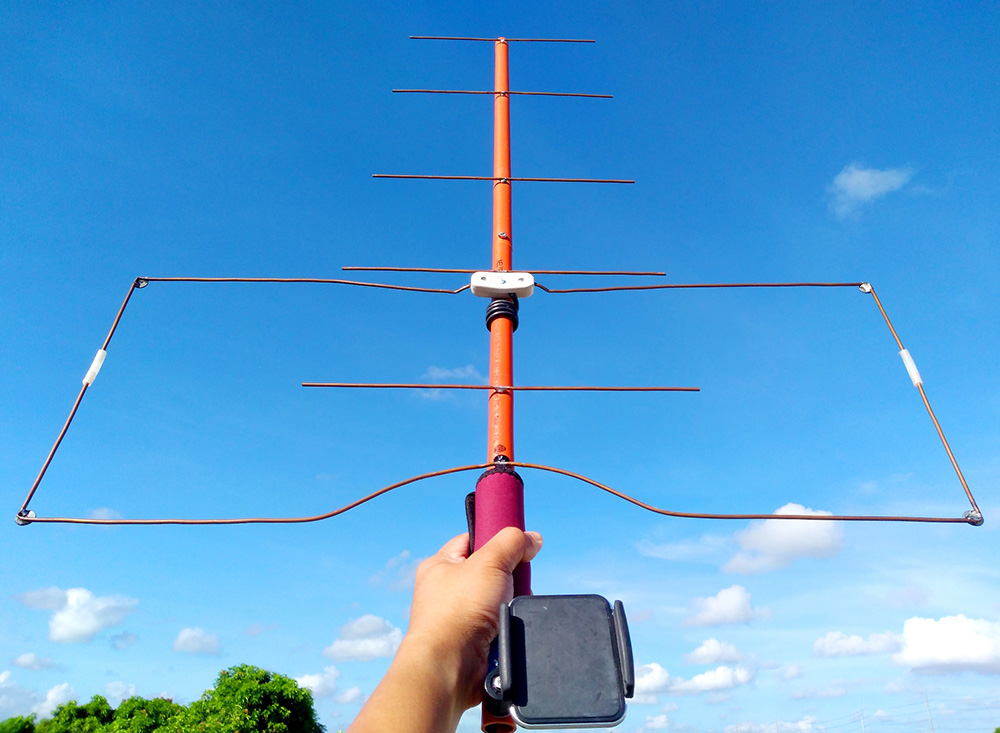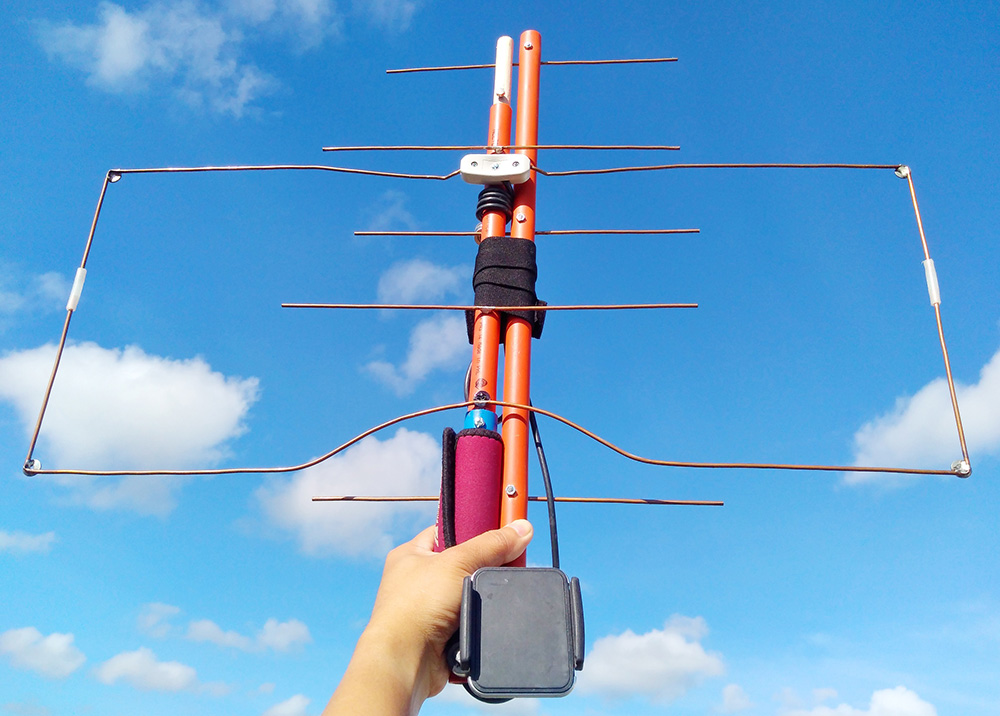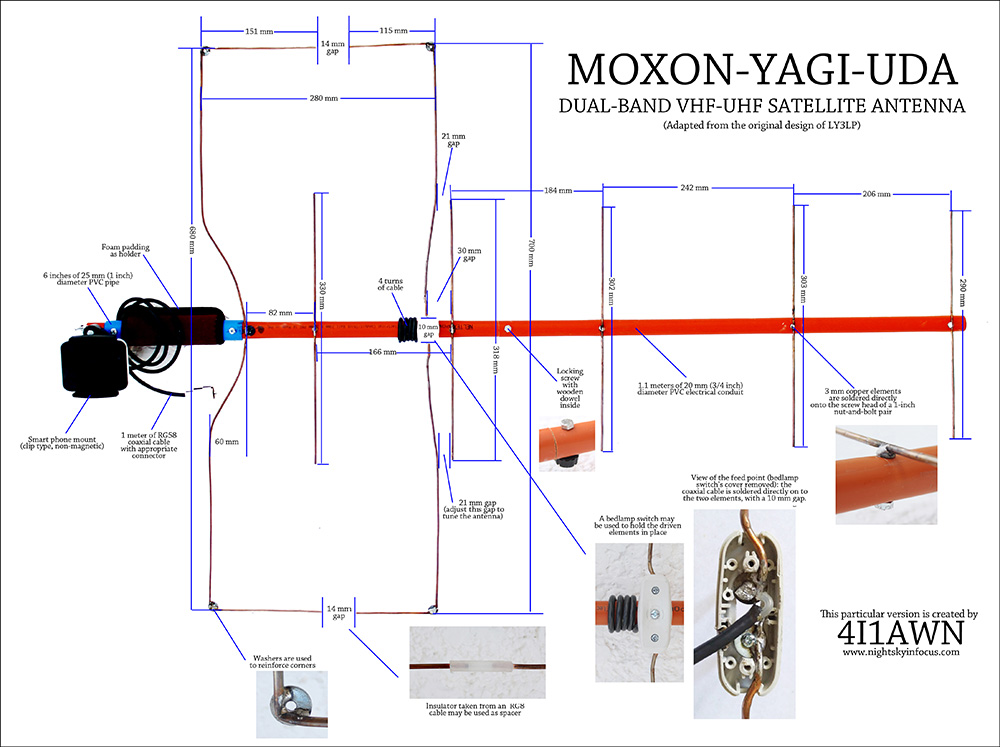One of the most popular antennas used to access FM satellites is the Moxon-Yagi-Uda dual band VHF-UHF antenna. It features a single feed point, connecting directly to the radio with no duplexer needed. The antenna featured in this article is based on the original design of LY3LP. Its dual-band design allows the use of a full duplex radio to simultaneously transmit in one band and receive in the other. Properly tuned, this antenna has an SWR (Standing Wave Ratio) of 1.0:1 in VHF and 1.1:1 in UHF.

A home-brewed dual-band satellite antenna
1. Very good RX and TX signals. An antenna’s performance is best judge by the receiving end. You can ask other satellite operators within reach of the Philippines to give you some concrete feedback regarding this antenna’s performance. Check out the logs in my QRZ page.
2. Easy to build. This antenna build is intended to be very easy to replicate. Very few tools and materials needed to build one. No special parts needed. Anyone can build it.
3. Elegant design. Because it only has one feed point, you only need one dual-band VHF-UHF radio to use this antenna (instead of using two different radios and feed points for each band, thereby eliminating the need for a duplexer). The coaxial cable from the radio connects directly to the antenna (no baluns). To maximize the full capability of this antenna, use it with a radio with full duplex capability.
4. Easy to tune. You only need to adjust the gap between the Moxon (VHF) driven element, and the Yagi-Uda (UHF) driven element to achieve perfect SWR. If you wish to move the center frequency (the frequency with the lowest SWR), adjust the length of the driven elements.
5. Lightweight. You will begin to appreciate this once you compare it with other antenna designs. Heavy antennas are not particularly useful for hand-held satellite work.
6. Portable. With the split-boom feature, you can easily store and transport this antenna. If needed, you can always disassemble and collapse everything into a very small package.
7. Durable. This antenna design is built to last a lifetime of satellite work.
8. Low-cost. How much does a commercial satellite antenna cost? To build this antenna, I spent an equivalent of 5 USD.
The antenna has been fully tested to work with satellites such as AO-91, AO-92, SO-50, IO-86, and PO-101 (Diwata 2).

The antenna’s boom may be split in the middle, for easy storage and transport.
To build your own satellite antenna, kindly refer to the antenna plans below.

To view at full resolution, click here. Adapted from the original design by LY3LP. This particular version with a number of modifications is created by 4I1AWN. It uses 3 mm copper tubing elements.
To see this antenna in action (a recorded ‘live’ satellite demo), head directly to Satellite Communications. To view the portable radio setup I use with this antenna, head directly to Portable Radio Setup.
Related link: Satellite Antenna Plans
For more information about satellite communications, head directly to my website at: https://nightskyinfocus.com/